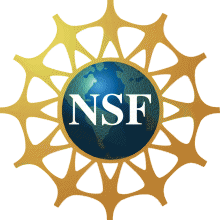Writing to Learn and Writing Across the Curriculum Clearinghouse
https://wac.colostate.edu/resources/wac/intro/wtl/
If you teach in a computer classroom, if students can bring laptops or tablets to class, or if students have easy access to computers outside of class, WTL activities of all sorts can be adapted for in-class writing.
Why Writing in Science Matters
Zhu, Wei. “Faculty views on the importance of writing, the nature of academic writing, and teaching and responding to writing in the disciplines.” Journal of Second Language Writing, Volume 13, Issue 1, March 2004, Pages 29–48. http://www.sciencedirect.com/science/article/pii/S1060374304000074
This study examined faculty views on academic writing and writing instruction. Data reported in this article came from ten qualitative interviews with business and engineering faculty members. Transcripts of the interviews were analyzed inductively and recursively, and two views on academic writing and writing instruction were identified. One view held that academic writing largely involved transferring general writing skills, and writing instruction would be most effectively provided by writing/language teachers. The other view recognized the unique thought and communication processes entailed in academic writing and the role of both content course faculty and writing instructors in academic writing instruction. However, content course faculty and writing instructors each assumed a different set of responsibilities. Implications of the findings for academic writing research and instruction are discussed.
Teaching Writing and Writing to Learn
Kellogg, R.T. (2008). “Training writing skills: A cognitive developmental perspective.” Journal of Writing Research, 1 (1), 1-26: http://neillthew.typepad.com/files/training-writing-skills.pdf
Writing skills typically develop over a course of more than two decades as a child matures and learns the craft of composition through late adolescence and into early adulthood. The novice writer progresses from a stage of knowledge-telling to a stage of knowledge transforming characteristic of adult writers. Professional writers advance further to an expert stage of knowledge-crafting in which representations of the author’s planned content, the text itself, and the prospective reader’s interpretation of the text are routinely manipulated in working memory. Knowledge-transforming, and especially knowledge-crafting, arguably occur only when sufficient executive attention is available to provide a high degree of cognitive control over the maintenance of multiple representations of the text as well as planning conceptual content, generating text, and reviewing content and text. Because executive attention is limited in capacity, such control depends on reducing the working memory demands of these writing processes through maturation and learning. It is suggested that students might best learn writing skills through cognitive apprenticeship training programs that emphasize deliberate practice.
Kellogg, Ronald T., and Bascom A. Raulerson. “Improving the writing skills of college students.” Psychonomic bulletin & review 14.2 (2007): 237-242. http://link.springer.com/article/10.3758/BF03194058#page-2
Advanced writing skills are an important aspect of academic performance as well as of subsequent work- related performance. However, American students rarely attain advanced scores on assessments of writing skills (National Assessment of Educational Progress, 2002). In order to achieve higher levels of writing performance, the working memory demands of writing processes should be reduced so that executive attention is free to coordinate interactions among them. This can in theory be achieved through deliberate practice that trains writers to develop executive control through repeated opportunities to write and through timely and relevant feedback. Automated essay scoring software may offer a way to alleviate the intensive grading demands placed on instructors and, thereby, substantially increase the amount of writing practice that students receive.
Maurino, Paula San Millan. “Writing to Learn and Writing in the Disciplines: Enhancing Computer and Technical Classes.” The Proceedings of the Information Systems Education Conference. Vol. 25. 2008.
http://proc.isecon.org/2008/2522/ISECON.2008.Maurino.pdf
This paper describes the implementation, process and results of adding a writing intensive component developed through a WID (Writing in the Disciplines) program to a 200 level course in Web design and development in the Computer Systems Department of the School of Business at Farmingdale State College. Department culture and philosophy about the changes mandated by the WID program are also discussed. The course’s goals and objectives were technical and could not be changed. Students were to learn Dreamweaver, Fireworks and Flash and use these software programs to create Websites that met research-grounded usability, functionality and design criteria. All writing assignments had to be linked to the course goals and objectives and related to what the students were to do in class and at home. The writing assignments were constructed to promote learning of the course material and to show how to present this material online as opposed to on paper. The key to success was found to be process writing, integration of the writing assignments with the course project and objectives, and extensive peer review. The key to success in the department was found to be an evolving awareness that writing can be used to enhance and support learning in technical classes.
Carter, Michael, Miriam Ferzli, and Eric N. Wiebe. “Writing to learn by learning to write in the disciplines.” Journal of Business and Technical Communication 21.3 (2007): 278-302.
http://jbt.sagepub.com/content/21/3/278.full.pdf+html
The traditional distinction between writing across the curriculum and writing in the disciplines (WID) as writing to learn versus learning to write understates WID’s focus on learning in the disciplines. Advocates of WID have described learning as socialization, but little research addresses how writing disciplinary discourses in disciplinary settings encourages socialization into the disciplines. Data from interviews with students who wrote lab reports in a biology lab suggest five ways in which writing promotes learning in scientific disciplines. Drawing on theories of situated learning, the authors argue that apprenticeship genres can encourage socialization into disciplinary communities.
Fillmore, Lily Wong, and Catherine E. Snow. What teachers need to know about language. US Department of Education, Office of Educational Research and Improvement, Educational Resources Information Center, 2000. https://eric.ed.gov/?id=ED444379
Responding to Student Writing
Elbow, Peter. “Ranking, evaluating, and liking: Sorting out three forms of judgment.” College English 55.2 (1993): 187-206.
http://www.jstor.org/stable/378503
In this article, Peter Elbow identifies the problem of how to assess writing. He distinguishes between ranking and evaluating, arguing that ranking is troubling because it can be inaccurate or unreliable, does not lend itself to substantive feedback, and can be harmful to the learning environment. Giving a score or a number (and he includes holistic scoring in this argument) leads students to care more about scores than learning. Evaluation, on the other hand, looks thoughtfully at a piece of writing and attempts to address the strengths and weaknesses of different stylistic and rhetorical features. Evaluations cannot be reduced to a single number. Elbow offers strategies for reducing the grade mania of both students and teachers, including: portfolios judged only as acceptable or unacceptable; “crude or minimal ranking,” using such terms as “Honors” and “Unsatisfactory”; analytical grid; the sharing of peer feedback and publication; and modified contract rating. Because too much evaluation can also harm the learning climate, Elbow supports the creation of “evaluation-free zones.” Elbow concludes by arguing for the importance of “liking,” emphasizing that good teachers like student writing, see what is potentially good, and encourage it. In his experience, “liking” leads to improvement, is a mark of a good writer, and encourages much better writing.
Writing for Second Language Users
Matsuda, Paul Kei. “Let’s face it: Language issues and the writing program administrator.” WPA: Writing Program Administration, 36 (1) (2012), 141–163.
This article addresses the reality of growing numbers of second language writers in American colleges and universities and potential policies and guidelines that can be applied to these writers, who often present sentence level anomalies. Matsuda discuss the concept of “instructional alignment and language issues.” By alignment, he means the intended outcomes of a course, instruction, and instructional assessment. The principle of alignment advises that we not punish students for skills they are not taught in the course and that outcomes to be assessed should be achievable through instruction and student effort. Reviewing the history of effective grammar instruction for second language learners and the effects of grammar feedback, Matsuda concludes that grammar feedback does not lead to learning and that teachers should stop punishing students for not bringing grammatical fluency to their writing. Thus, summative assessments that include control of grammar are not in alignment. He does believe that grammar feedback is important in formative assessments, encouraging teachers to provide significant feedback along with “metalinguistic commentary.” Some recommended instructional and institutional strategies to deal with grammar include: focusing on linguistic resources rather than deficits (“point addition versus point deduction” system), working with “treatable errors,” and limiting the percentage of grammar grades to the proportion of grammar instruction.
Matsuda, Aya, and Paul Kei Matsuda. “World Englishes and the classroom: An EFL perspective.”TESOL Quarterly 44.2 (2010): 365-369.
English has become the dominant language around the world. This statement hardly requires a justification, but it does warrant some qualifications. The English language is not a monolith but a catchall category for all its varieties—linguistic and functional—hence the term World Englishes (WE). A majority of English language users today have acquired English as an additional language (Graddol, 1997), and they use it as a medium of intranational and international communication, often in tandem with other languages. With the growing understanding of the complexity of English, there has been an increasing interest in considering the pedagogical implications of WE, defined inclusively to encompass not only the linguistic varieties but also the functional varieties of English today. In this brief article, the authors explore implications of WE for the teaching of writing, especially with an eye toward expanding circle contexts, where English is neither dominant nor institutionalized. They then discuss some principles that may help teachers consider how and to what extent they can incorporate insights from WE research into their own teaching contexts.
Writing and Deafness
Albertini, John A., and Sara Schley. “Characteristics, Instruction, and Assessment.” Oxford handbook of deaf studies, language, and education (2003): 123.
Today’s information-based societies require technological knowledge and sophisticated literacy skills.Society’s literacy expectations are reflected in school standards, and with increased diversity in studentpopulations, educators have had to find alternate models and approaches for students to use to meetthese standards. This is true especially in the area ofteaching students to write. Focusing on researchconducted since the I 970s, this chapter examines what and how deafstudents write, educators’conceptions of writing the development of writing skills, the influence of language and modality onteaching deaf studentsto write, and assessment. Research indicates that grammatical and lexicalperformance will improve with direct instruction over time, and that use offamiliar genres andfunctional approaches to the teaching and testing of writing will contribute to the learning offluencyand discourse organization.


